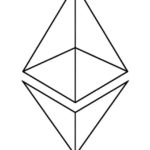How Journalists Can Securely Prove access to Sensitive Data
The ongoing scandal involving a Signal chat leak has raised questions about how journalists can securely prove access to sensitive information.Initially, the White House denied the chat’s existence. When evidence mounted, they claimed it contained no classified information.
Journalist Jeffrey Goldberg left the chat, but what proof does he have? The chat was set to self-destruct messages, leaving only screenshots as evidence.This makes verification nearly impractical.
The solution? Cryptographic methods like proof of existence without disclosure. This involves cryptographic hashes and reliable timestamps. It can be done manually on a blockchain or thru blockchain-based timestamping services.
Here’s how it effectively works: copy the message, generate a hash, publish it on a blockchain, and save the private key. This proves you had knowledge of the original message at the time of the blockchain transaction.
A social media account might serve a similar function, but it’s vulnerable and not immutable like a blockchain.
This process creates an undeniable, timestamped record confirming the existence of a specific message without revealing its contents publicly until the journalist chooses to do so.
For journalists, this method offers a secure way to prove they had access to sensitive information at a specific time, ensuring their evidence is verifiable and immutable.








